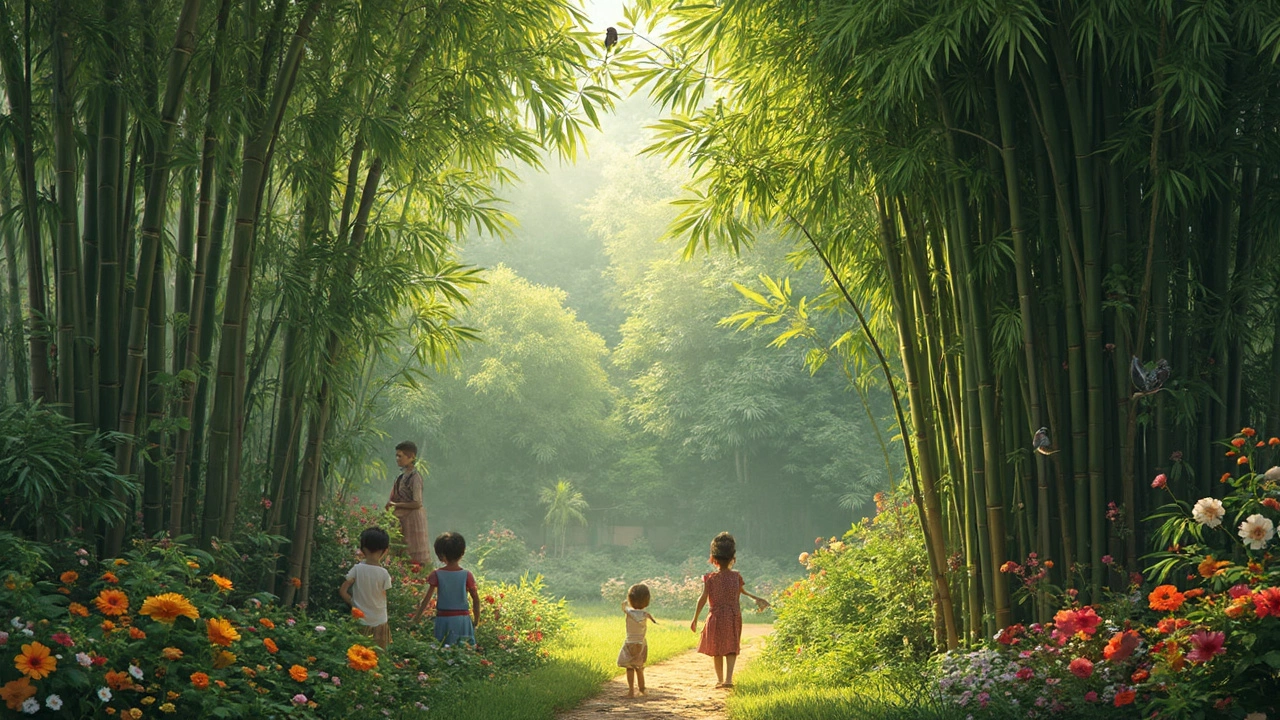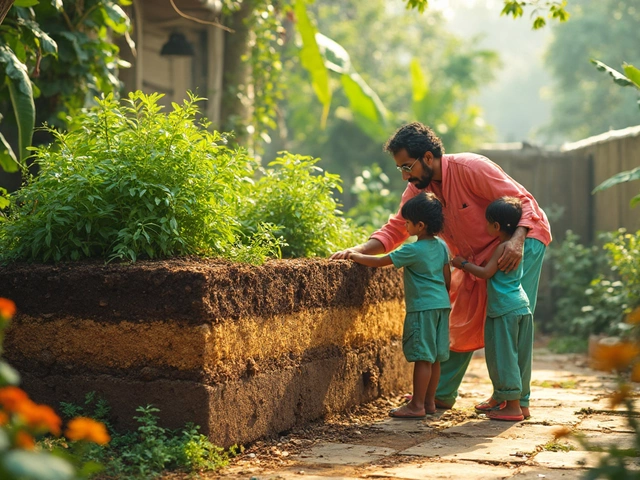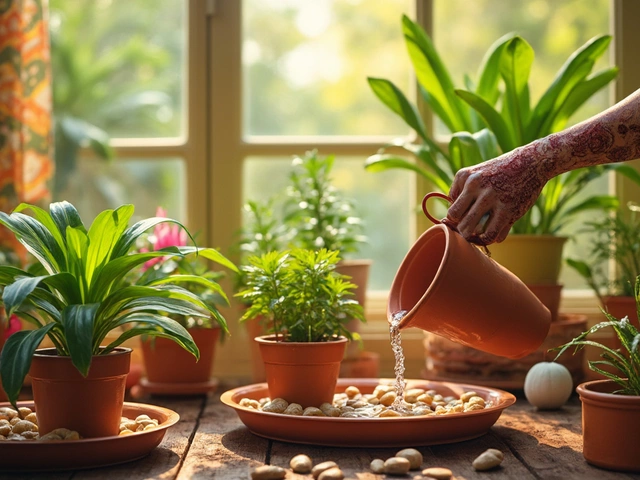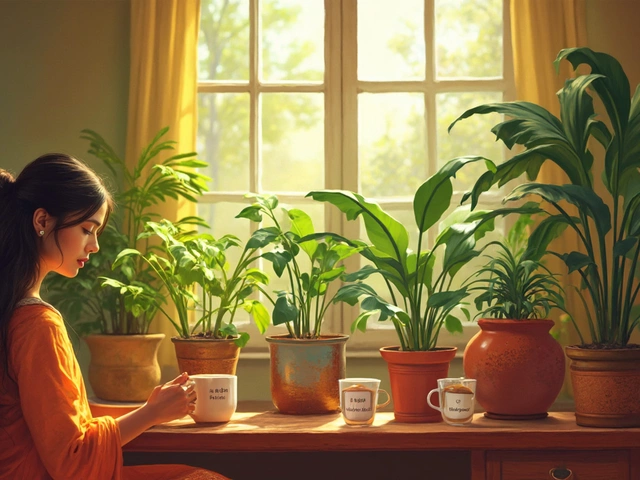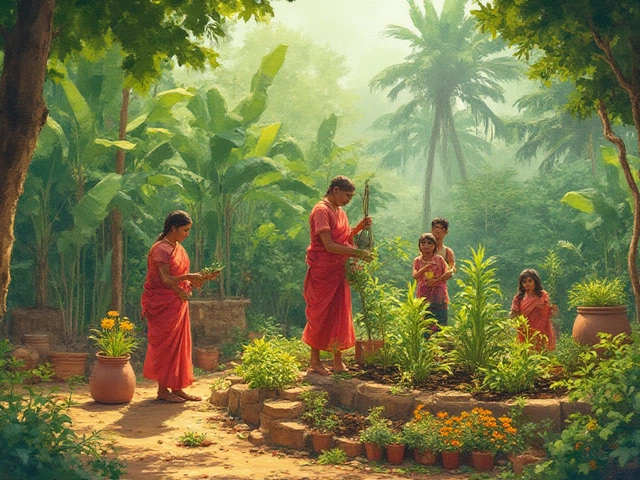If you think watering your garden too often or buying new mulch every season is sustainable, you might want to think again. The real hero in green gardening is hiding in plain sight: bamboo. This plant has a reputation for being almost unstoppable—and for good reason.
Bamboo is the fastest-growing plant you can put in your soil. Some types rocket up by three feet in just one day if the weather is right. No, that’s not a typo—it's like nature's version of instant noodles, but healthier for the world. Imagine not waiting decades for that hedge or privacy screen to mature.
But the awesomeness doesn’t stop there. Bamboo is also a heavyweight in capturing carbon, soaking up more CO2 and pumping out more oxygen than trees of a similar size. The secret is in its crazy-fast growth and dense leaves. So, you’re not just making your backyard look cool—you’re helping the whole planet breathe easier.
If you’re thinking it’s tricky to grow, relax. Bamboo is low maintenance, doesn’t need loads of pesticides, and can usually handle what nature throws at it. You can use it for shade, fencing, or just to add some zen to your space. Let’s break down why bamboo beats the competition and how you can make it work at home.
- Why Bamboo Tops the Charts
- How Bamboo Helps the Planet
- Tips for Growing Bamboo at Home
- Creative Bamboo Uses in Your Garden
Why Bamboo Tops the Charts
When you talk about the most sustainable plant for any garden, bamboo pretty much steals the show. First off, this thing grows at a speed that puts everything else to shame. Some species of bamboo can shoot up around 91 centimeters, or almost 3 feet, in just 24 hours. That's real—Guinness World Records even backs it up.
But it’s not just about speed. Bamboo has a natural way of surviving in places where other plants struggle. You'll find bamboo thriving in everything from humid jungles to windy hillsides. It doesn’t need fancy soil or mega doses of fertilizer. In most cases, it just needs some rain, decent sun, and a little space.
If you care about water use—and most gardeners do—here’s another win for bamboo. Compared to the thirsty trees and shrubs some folks plant, bamboo needs surprisingly little water once it gets going. That means you can save on water bills and help conserve local water resources.
Let’s not skip how tough bamboo is. When other plants flop after a rough storm or drought, bamboo usually isn’t bothered. Its long, jointed stems (called culms) bend but rarely break. This makes it pretty much storm-proof and drought-tolerant.
- Grows crazy fast (some species up to 3 feet a day)
- Low maintenance and needs fewer chemicals
- Works even in crummy soil
- Handles tough weather without drama
With all that in mind, it’s no wonder that bamboo is a solid pick for sustainable gardening ideas. It’s hard to find another sustainable plant that covers all these bases so well—and gives back to the environment at the same time.
| Plant | Max Growth Per Day | Water Needs |
|---|---|---|
| Bamboo | Up to 3 feet | Low to Moderate |
| Oak Tree | Few millimeters | High |
| Pine | Less than 1 inch | Moderate |
So, next time you're thinking of an eco-friendly addition to your yard, bamboo should be at the top of your list.
How Bamboo Helps the Planet
Bamboo isn’t just popular because it’s easy to grow. It goes above and beyond in helping the environment, and that’s what really sets it apart as the most sustainable plant for your garden. Let's look at the real reasons bamboo makes such a difference.
First, bamboo is a champ at soaking up carbon dioxide. Compared to regular trees, bamboo sucks up around 30% more CO2 and kicks out more oxygen. This means it actively helps fight climate change, one plant at a time. Also, bamboo doesn’t die when you harvest it—it just keeps growing from the roots so there's no need for replanting or deforestation. That’s not something you get from most trees.
Here’s a quick snapshot of how bamboo stacks up against common trees:
| Feature | Bamboo | Regular Trees |
|---|---|---|
| Carbon Absorption | Up to 12 tons CO2/ha/year | ~6 tons CO2/ha/year |
| Oxygen Output | 35% more per acre | - |
| Harvest Time | 3-5 years | 10-30 years |
| Soil Erosion Control | Excellent, holds soil tight | Varies |
Bamboo roots act like a living net, gripping soil and stopping erosion, which is a big deal if you live somewhere with heavy rains. This helps prevent landslides and keeps local waterways cleaner since less dirt gets washed away.
Bamboo can handle low-quality soil and still thrive without loads of chemical fertilizers or tons of water. So, you’re not just making your backyard greener; you’re cutting down on garden waste and resources too. The less we use fertilizers and water, the better it is for nature and for your water bill.
All these perks make bamboo the top choice if you care about eco-friendly gardening. When you plant bamboo, you’re basically giving the planet a power-up.
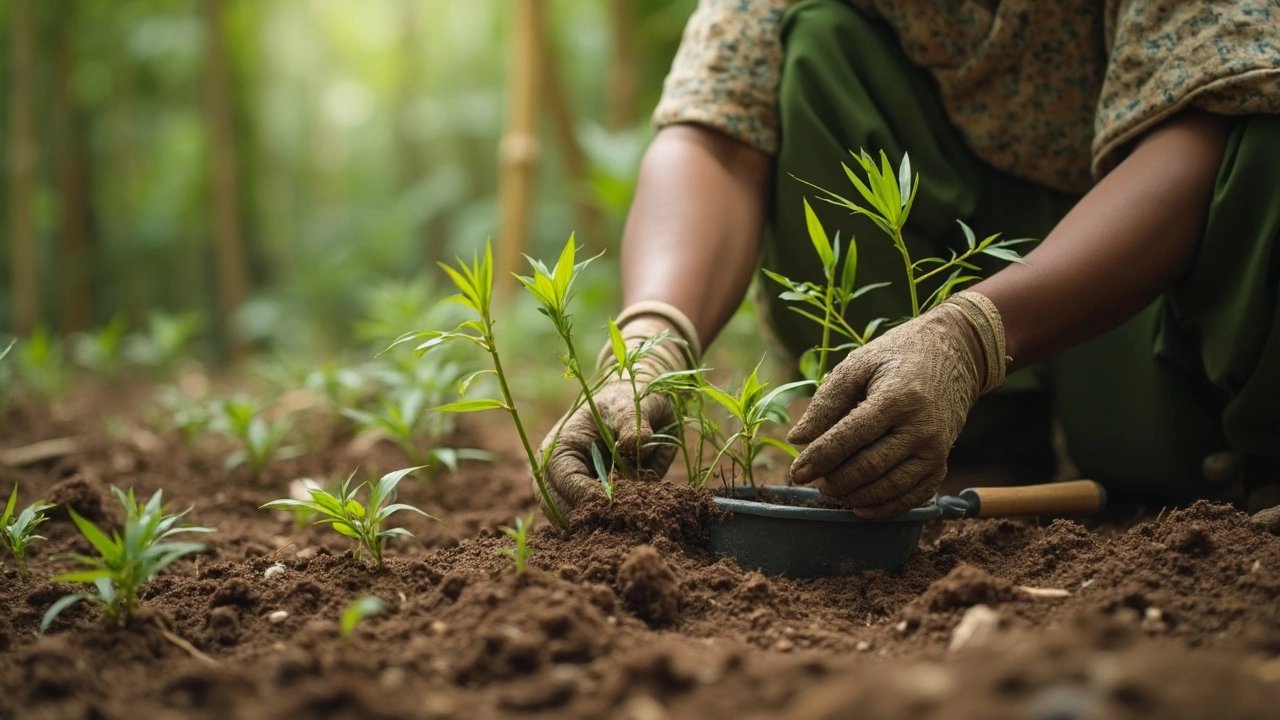
Tips for Growing Bamboo at Home
Thinking about planting bamboo in your yard? Good call. It’s sturdy, grows like crazy, and won’t ask for much in return—so you get easy shade and privacy. But you do need to know these basics before grabbing the first plant at your local shop.
- Pick the Right Type: There are two kinds: clumping and running. Clumping bamboo grows in tight bunches—less likely to take over your garden. Running bamboo spreads fast and can get a little wild, so if you’re worried about it invading your neighbor’s yard, stick with clumping.
- Sun and Soil: Most types want full sunlight, but a few shade-tolerant options exist. Bamboo likes well-draining soil with a good mix of organic matter. Soggy or clay-heavy soils can rot the roots.
- Watering Needs: Bamboo is tough but needs regular watering to get established in the first year. Once grown, it can handle short dry spells, but don’t abandon it in blazing heat.
- Natural Fertilizer: Give bamboo some compost or old leaves around the base once or twice a year. Skip chemical fertilizers—bamboo responds well to simple organic stuff.
- Containment: If you go with running bamboo, use a root barrier at least 2-3 feet deep to keep it in check. For raised beds or planters, you’re totally safe.
- Pruning: Cut away old or weak canes each spring. This keeps your bamboo healthy and looking neat.
If you’re curious about just how much a well-planned bamboo patch can change a home garden, here’s a quick look:
| Bamboo Type | Growth Rate (per day) | Ideal Sun | Best Use |
|---|---|---|---|
| Clumping | Up to 12 inches | Full sun | Hedges, privacy screens |
| Running | Up to 36 inches | Full/Partial sun | Large spaces, fast screening |
Remember to check if bamboo is considered invasive in your area—even clumping types. Some places have restrictions, so better safe than sorry. If you follow these pointers, you’ll have a sweet, sustainable setup that practically looks after itself.
Creative Bamboo Uses in Your Garden
If you’ve got bamboo growing, you’re basically sitting on a goldmine for sustainable gardening ideas. This is not just some fancy plant to look at. Bamboo pulls its weight and then some in your backyard.
First off, let’s talk privacy. Bamboo shoots up fast and thick, making it a killer option for a natural privacy screen. Instead of throwing up another wooden fence, plant a row of bamboo and get that green barrier going. You’ll keep nosy neighbors out and invite birds in—win-win.
You can also use bamboo canes for just about everything. They turn into sturdy garden stakes that’ll support tomato plants, beans, or even heavy sunflowers. Forget those plastic stakes that break every year—bamboo keeps going.
- Bamboo fencing: Cut down some canes, tie them together, and boom—you’ve got a durable, eye-catching fence that’s all natural and super strong.
- DIY trellises: Build simple trellises for your cucumbers, peas, or climbing flowers. It takes about ten minutes and zero hardware if you have a roll of twine.
- Garden edging: Shorter bamboo poles make quick work of tidy edging for flower beds or vegetable rows. It keeps dirt where it belongs and looks pretty sharp.
- Raised beds: If you want something different from wooden frames, weave bamboo together for the sides of your raised garden beds. It drains well, lasts a long time, and doesn’t cost much if you’ve got your own supply.
- Garden art: Try small crafts or sculptures. Kids love painting bamboo and sticking it in garden beds, and honestly, it adds a fun vibe to the whole space.
Bamboo mulch is another smart move if you want to stick to eco-friendly gardening. When you trim your bamboo, chop up the leaves and small branches—they break down fast, hold moisture in the soil, and give back nutrients.
| Bamboo Use | How Long It Lasts (Outdoors) |
|---|---|
| Garden stakes | 2–5 years |
| Fencing/Screening | 5–15 years |
| Mulch | Adds organic matter in one season |
| Trellis | 3–7 years |
If you’re the DIY type, the possibilities go on. From homemade wind chimes to bird feeders, bamboo is the Swiss army knife of garden plants. The best part? You’re not bringing more plastic into your life and you’re using what you grow. That’s real sustainability in action.
